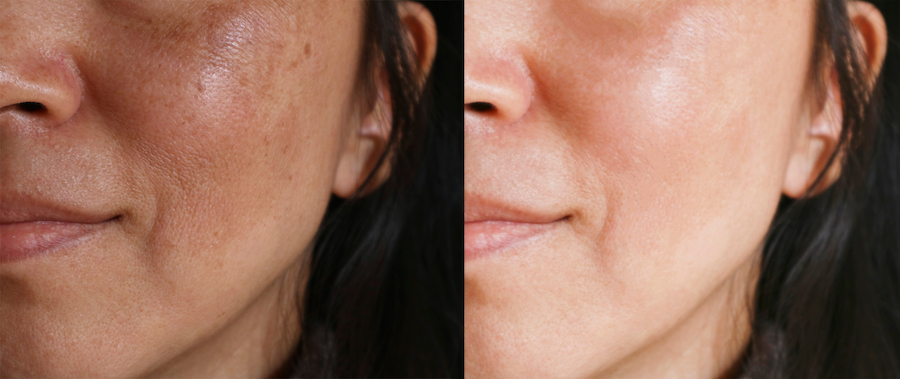Melasma Explained
Melasma is a common pigmentation skin disorder. The condition is characterized by dark, discolored patches with serrated, irregular borders. It usually affects areas of your body that are exposed to sun, especially the face and neck. The patches are symmetrical and identical on both sides of the face. Melasma can also occur on cheeks, forehead, chin, bridge of the nose, and forearms. While melasma doesn’t do any physical harm or present any health risks, having these dark patches may cause you distress.
Causes and Risk Factors of Melasma
It isn’t totally clear why melasma occurs, but it seems to be an interplay of several environmental and internal factors. Typically, individuals with darker skin types are more likely to develop melasma than those with lighter skin. This is because darker skin has more active pigment-producing cells, known as melanocytes. Melasma occurs when melanocytes become hyperactive and produce too much color in certain areas to the skin. This is similar to how freckles and brown age spots form, only that melasma patches are usually larger.
This condition is more common in women of reproductive ages, but it can also affect men. Melasma can be triggered by hormonal changes associated with pregnancy, birth control pills, and hormone replacement therapy. When this condition occurs in pregnant women, it is also called “the mask of pregnancy” or chloasma. Sun exposure can also cause melasma because UV rays affect melanocytes and cause them to malfunction. There may also be a genetic component to melasma, as it often runs in families.
Chemicals Peels to Treat Melasma
While melasma can resolve on its own if caused by hormonal changes, that’s not always the case. If the patches don’t fade over time, you may want to consider having a chemical peel. Chemical peeling involves the removal of damaged skin cells by application of chemical agents to the skin. This works by increasing cellular turnover, which old, sun-damaged skin to slough off and new skin to rise faster and reduce the appearance of hyperpigmentation. Superficial and medium-depth chemicals peels are preferred to help remove or fade the patches. Deeper peels are not appropriate because they’re associated with more complications, longer recovery times, and unpredictable results
To learn more about melasma and/or chemical peels, get in touch with North Scottsdale Laser and Skin Care Clinic and book an appointment with us. We’ll examine your skin to determine what type of peel is best for you. Call us today at 480-513-2888 to schedule your complimentary consultation.


